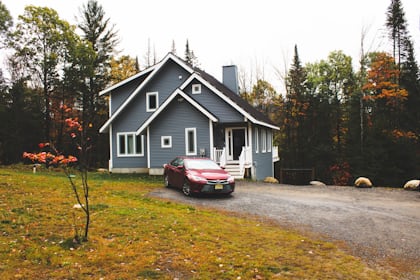Introduction

Does The budget Insurance Take Into Account Rural Development? The President’s Budget for the fiscal year includes a comprehensive plan to address the housing crisis in the United States. With a focus on affordability, accessibility, and equity, the budget aims to provide safe and affordable housing for all Americans, regardless of their income or background. While the budget addresses various aspects of housing, including rental affordability and homeownership, one important question arises: Does the budget take into account rural development?
The Importance of Rural Development
Rural areas in the United States face unique challenges when it comes to housing and economic development. Limited resources, lack of infrastructure, and a smaller population base can make it difficult to attract investment and provide affordable housing options. However, rural development is crucial for the overall well-being of these communities and the nation as a whole.
Rural areas contribute significantly to the country’s agricultural output, natural resources, and cultural heritage. They are home to millions of Americans who deserve access to safe and affordable housing. Recognizing this, the President’s Budget includes provisions that specifically address rural development and aim to uplift these communities.
Building and Preserving Affordable Housing in Rural Areas
One of the key components of the President’s Budget is the focus on building and preserving affordable housing. This includes targeted efforts to address the housing needs of rural communities. The budget proposes a range of measures to incentivize the construction and rehabilitation of affordable housing in rural areas.
New Neighborhood Homes Tax Credit
On budget insurance we need to encourage investment in affordable housing in low-income communities, the budget proposes the creation of a new Neighborhood Homes Tax Credit. This tax provision would cover the gap between the cost of construction and the sale price for rehabilitated or newly constructed single-family homes in low-income rural communities. By making it financially viable for developers to build or renovate homes in these areas, the tax credit aims to increase the supply of affordable housing options in rural communities.
Expansion of the Low-Income Housing Tax Credit (LIHTC)
The Low-Income Housing Tax Credit (LIHTC) is a critical tool for promoting the development of affordable housing across the country. The President’s Budget includes an expansion of the LIHTC program to boost the supply of affordable housing in rural areas. This includes permanently increasing the allocation of tax credits to states and reducing the private activity bond financing requirement. These measures aim to attract more private capital into LIHTC deals and incentivize the construction of affordable housing units in rural communities.
Project-Based Rental Assistance (PBRA) for Extremely Low-Income Households
The budget insurance recognizes the specific needs of extremely low-income households in rural areas and proposes funding for new Project-Based Rental Assistance (PBRA) contracts. These long-term contracts with private for-profit or non-profit owners will provide affordable housing options for vulnerable rural populations. By combining PBRA contracts with other low-income housing programs and incentives, the budget aims to attract development capital and create new affordable homes for the neediest families in rural areas.
Reducing Barriers to Affordable Housing Development
Rural communities often face unique challenges when it comes to housing development, including restrictive zoning and burdensome permitting processes. The President’s Budget includes funding for planning and housing capital grants to incentivize state and local jurisdictions to reduce barriers to affordable housing development. These grants will help identify and remove obstacles to affordable housing in rural areas, promoting the construction of new homes and increasing housing choice for residents.
Promoting Rental Affordability and Fairness in Rural Areas
Rental affordability is a pressing issue in rural communities, where a significant portion of the population relies on renting as their primary housing option. The President’s Budget insurance includes measures to promote rental affordability and fairness, ensuring that rural residents have access to safe and affordable rental housing.
Expansion of the Housing Choice Voucher (HCV) Program
The Housing Choice Voucher (HCV) program provides rental assistance to low-income households, allowing them to afford housing in the private market. The budget proposes an expansion of the HCV program, including additional funding to maintain services for currently assisted families and to provide assistance to an additional 50,000 households. This expansion will help address the rental affordability crisis in rural areas and ensure that more families have access to safe and affordable housing options.
Housing Voucher Guarantee for Extremely Low-Income Veterans
Veterans in rural areas often face housing insecurity and homelessness due to limited affordable housing options. The President’s Budget includes a proposal to create a housing voucher guarantee for extremely low-income veterans. This initiative aims to provide rental assistance to veteran renter households with the greatest needs, ensuring that no veteran is left without a stable and affordable place to live. This guarantee would be implemented gradually, with the goal of providing assistance to all eligible veterans by 2033.
Housing Voucher Guarantee for Youth Aging out of Foster Care
Youth aging out of foster care often face significant challenges when it comes to finding stable housing. The budget proposes the establishment of a housing voucher program specifically for youth aging out of foster care. This program aims to provide rental assistance to these vulnerable young people, ensuring that they have access to safe and affordable housing as they transition into adulthood. By addressing the unique housing needs of this population, the budget aims to prevent homelessness and promote successful outcomes for youth in rural areas.
Making Homeownership Accessible in Rural Areas
Homeownership is a cornerstone of the American Dream, and the President’s Budget recognizes the importance of making homeownership accessible to all, including residents of rural areas. The budget includes measures to support first-time and first-generation homebuyers, who may face additional barriers to homeownership in rural communities.
Down Payment Assistance for First-Time, First-Generation Homebuyers
Many potential homebuyers in rural areas face challenges when it comes to saving for a down payment. The budget proposes providing down payment assistance to first-time and first-generation homebuyers, who may not have access to the same financial resources as other buyers. This assistance aims to level the playing field and make homeownership more attainable for individuals and families in rural communities.
FHA Mortgage Insurance Premium Reduction
The Federal Housing Administration (FHA) plays a vital role in promoting homeownership by providing mortgage insurance to lenders. The President’s Budget includes a reduction in the annual mortgage insurance premium charged by the FHA. This reduction is projected to save homebuyers and homeowners with new FHA-insured mortgages an average of $800 per year. By lowering housing costs, this measure aims to make homeownership more affordable for residents of rural areas.
Energy Efficiency and Resilience in Rural Housing
The budget recognizes the importance of energy efficiency and resilience in rural housing. It includes funding to support energy and water efficiency improvements and green features in housing construction in rural communities. By investing in these improvements, the budget aims to reduce housing costs for low-income borrowers while also increasing the resilience of rural housing to the impacts of climate change.
Conclusion on Budget Insurance
The President’s Budget insurance for the fiscal year recognizes the unique challenges and needs of rural communities when it comes to housing. It includes a range of measures to promote rural development, increase affordable housing options, and improve rental affordability and homeownership opportunities in rural areas. By addressing these issues, the budget aims to ensure that all Americans, regardless of their location, have access to safe, affordable, and sustainable housing options.

1 thought on “Does The Budget Insurance Take Into Account Rural Development?”